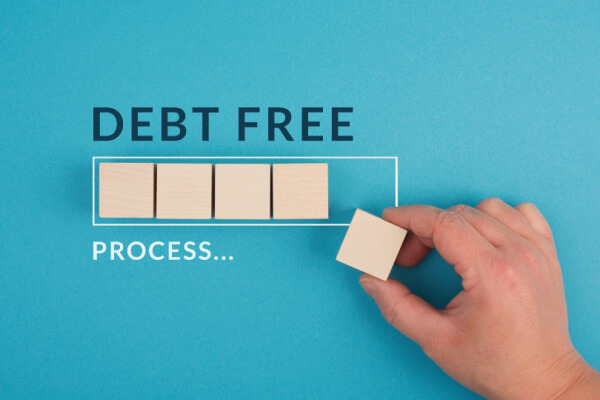In an increasingly consumer-driven world, the burden of debt can feel overwhelming, a silent weight that impacts everything from daily stress levels to long-term financial freedom. For countless individuals and families, the dream of debt-free living isn’t just a fantasy; it’s a tangible, achievable goal that promises peace of mind, increased opportunities, and true financial resilience. This isn’t about extreme frugality or deprivation; it’s about making conscious, strategic choices that reshape your financial landscape. For anyone seeking to break free from the shackles of loans, credit card balances, and mortgages, understanding and implementing effective debt-free living strategies is paramount. This makes it a highly valuable topic for those aiming to optimize their personal finances and, for content creators, a powerful driver for SEO and high Google AdSense engagement through relevant, actionable, and life-changing information. This comprehensive guide will delve deep into the core principles of escaping debt, explore practical steps to eliminate various types of liabilities, and unveil how this powerful financial philosophy can fundamentally transform your life.
The Debt Trap: Why We Accumulate Debt
Before embarking on the journey to debt-free living, it’s crucial to understand why debt becomes such a pervasive issue for many. Debt isn’t inherently bad—it can be a tool for major investments like a home or education. However, it often spirals out of control due to a combination of economic pressures, societal influences, and individual financial habits.
Common reasons people accumulate debt include:
- Consumerism and Instant Gratification: Modern society heavily promotes consumption. Easy access to credit cards and buy-now-pay-later schemes makes it simple to purchase items beyond immediate means, driven by advertising and social pressures.
- Lack of Financial Literacy: Many individuals are not taught effective money management skills, budgeting, or the true cost of interest, leading to uninformed financial decisions.
- Emergencies and Unexpected Expenses: Medical emergencies, job loss, car repairs, or home renovations can quickly deplete savings and force reliance on credit or loans.
- High Cost of Living: In many urban areas, the cost of housing, education, and even basic necessities can push individuals to borrow simply to cover essential expenses.
- Student Loans: The rising cost of higher education means many graduates start their adult lives with substantial student loan debt, impacting their ability to save or invest.
- Mortgages: While often considered “good debt,” a mortgage is still a significant liability that requires long-term commitment and impacts cash flow.
- Lifestyle Inflation: As income increases, so do spending habits. Instead of using extra money to pay down debt, people upgrade their lifestyles, keeping them perpetually in debt.
- Poor Budgeting and Tracking: Without a clear understanding of income versus expenses, it’s easy to overspend and rely on credit to bridge the gap.
Recognizing these triggers is the first step toward building a sustainable path to debt-free living. It requires self-awareness and a willingness to challenge established habits.
Core Principles of Debt Elimination
Achieving debt-free living isn’t a random occurrence; it’s the result of applying a set of strategic principles consistently and diligently. These principles form the bedrock of any successful debt elimination plan.
A. Mindset Shift: From Consumer to Saver
The most powerful tool in your debt-free arsenal is a fundamental change in your psychological approach to money.
- Embrace Delayed Gratification: Resisting the urge for immediate purchases and instead saving or paying down debt creates long-term benefits.
- Focus on Value, Not Just Price: Evaluate purchases based on their long-term utility and necessity rather than momentary desire.
- Financial Independence as a Goal: Shift your perspective from merely surviving paycheck to paycheck to actively building a future where money works for you, not against you.
- Acknowledge and Address Emotional Spending: Identify triggers for impulse buys or using shopping as a coping mechanism, and develop healthier alternatives.
- Cultivate a Frugal, Not Deprived, Mentality: Learn to enjoy living simply and finding joy in experiences and relationships rather than material possessions. Frugality doesn’t mean deprivation; it means mindful spending.
This mindset shift is foundational, providing the mental fortitude needed to navigate the challenges of debt repayment.
B. Accurate Debt Assessment: Knowing Your Enemy
You cannot conquer what you don’t understand. A clear, honest assessment of your current debt situation is non-negotiable.
- List All Debts: Compile a comprehensive list of every single debt you owe—credit cards, personal loans, car loans, student loans, mortgages, medical bills, etc.
- Identify Key Details: For each debt, record the following:
- Creditor: Who you owe money to.
- Original Amount: How much you initially borrowed.
- Current Balance: The exact amount you still owe.
- Interest Rate (APR): This is crucial; higher rates drain more money.
- Minimum Payment: The smallest amount you can pay each month.
- Due Date: When the payment is required.
- Calculate Total Debt: Sum up all your balances to get a complete picture of your financial burden. This can be intimidating but is a vital reality check.
This detailed overview provides the data needed to formulate a targeted and effective repayment strategy.
C. Budgeting: Your Financial Roadmap
A budget isn’t restrictive; it’s empowering. It tells your money where to go instead of wondering where it went. It’s the cornerstone of debt-free living.
- Track Income: Accurately determine all sources of monthly income after taxes.
- Track Expenses: Meticulously record every penny spent for at least one month to identify where your money is actually going. Categorize expenses (housing, food, transportation, entertainment, etc.).
- Distinguish Needs vs. Wants: Ruthlessly categorize expenses. Needs are essential for survival (shelter, basic food, utilities). Wants are discretionary (dining out, subscriptions, new gadgets).
- Create a Realistic Budget: Allocate specific amounts for each expense category. Ensure your total expenses (including debt payments) are less than your income.
- Automate Savings/Debt Payments: Set up automatic transfers to your savings or direct payments to your highest-priority debts immediately after you get paid. This removes the temptation to spend.
- Regular Review: A budget is a living document. Review and adjust it monthly or quarterly to reflect changes in income, expenses, or debt repayment progress.
A well-constructed budget reveals surplus cash that can be redirected towards accelerating debt repayment.
D. Increasing Income: More Ammunition
While cutting expenses is vital, increasing your income provides additional financial firepower for debt elimination.
- Side Hustles: Explore opportunities to earn extra money outside your primary job, such as freelancing, tutoring, driving for ride-sharing, or selling crafts.
- Overtime Hours: If available, work extra hours at your current job.
- Sell Unused Items: Declutter your home and sell items you no longer need or use (clothing, electronics, furniture) on online marketplaces.
- Negotiate Salary: If applicable, prepare to negotiate a higher salary or seek promotions at your current job.
- Skill Development: Acquire new skills that can lead to higher-paying opportunities.
Every extra dollar earned can be directly funneled into debt repayment, significantly shortening your journey to freedom.
Proven Debt Repayment Strategies
Once you have a clear picture of your debt and a solid budget in place, it’s time to choose a repayment strategy. Two popular methods are the Debt Snowball and Debt Avalanche.
A. The Debt Snowball Method
Popularized by financial expert Dave Ramsey, this method focuses on psychological wins to build momentum.
- List Debts Smallest to Largest: Arrange all your debts from the lowest balance to the highest, regardless of interest rate.
- Make Minimum Payments on All But One: Pay the minimum required payment on all debts except the one with the smallest balance.
- Attack the Smallest Debt: Put all extra available money towards the debt with the smallest balance.
- Roll the Payment: Once the smallest debt is paid off, take the money you were paying on it (its minimum payment plus any extra) and add it to the minimum payment of the next smallest debt.
- Repeat: Continue this process, rolling the payment from one debt to the next, like a snowball growing as it rolls downhill.
Pros: Provides quick psychological wins as small debts are eliminated, boosting motivation. Cons: May pay more interest over time compared to the avalanche method if high-interest debts are larger.
B. The Debt Avalanche Method
This method focuses purely on mathematical efficiency, saving you the most money in interest.
- List Debts Highest Interest to Lowest: Arrange all your debts from the highest interest rate to the lowest, regardless of the balance.
- Make Minimum Payments on All But One: Pay the minimum required payment on all debts except the one with the highest interest rate.
- Attack the Highest Interest Debt: Put all extra available money towards the debt with the highest interest rate.
- Roll the Payment: Once the highest interest debt is paid off, take the money you were paying on it (its minimum payment plus any extra) and add it to the minimum payment of the next highest interest debt.
- Repeat: Continue this process until all debts are paid off.
Pros: Saves the most money in interest over the long run. Cons: Can be less motivating initially, as it might take longer to pay off the first debt if it’s a large, high-interest one.
C. Debt Consolidation and Refinancing (with Caution)
These can be tools to simplify debt or reduce interest, but they come with risks.
- Debt Consolidation Loan: Taking out a single new loan to pay off multiple smaller debts. This can simplify payments and potentially lower your overall interest rate.
- Caution: Ensure the new interest rate is genuinely lower and that you don’t take on new debt after consolidating.
- Balance Transfer Credit Cards: Moving high-interest credit card debt to a new card with a 0% introductory APR for a promotional period.
- Caution: Requires excellent credit, often has a balance transfer fee, and you must pay off the balance before the promotional period ends, or the interest rate will skyrocket. Avoid using the old cards for new purchases.
- Refinancing: For larger debts like mortgages or auto loans, refinancing can secure a lower interest rate, reducing monthly payments or the total interest paid over the life of the loan.
- Caution: Involves closing costs and fees, so calculate if the savings outweigh these upfront expenses.
These methods are strategic tools, not magic solutions. They require discipline to prevent re-accumulating debt.
Tackling Specific Debt Types

While the general principles apply, specific types of debt often benefit from tailored approaches.
A. Credit Card Debt: The High-Interest Trap
This is often the most urgent debt to eliminate due to exorbitant interest rates.
- Stop Using Cards Immediately: Cut them up, freeze them, or put them away. Do not add to the balance.
- Prioritize High-Interest Balances: Use either the Debt Snowball or Debt Avalanche, focusing intensely on these first.
- Negotiate Lower Interest Rates: Call your credit card company and ask if they can lower your APR. It often works, especially if you have a good payment history.
- Transfer Balances (Carefully): As mentioned, a 0% APR balance transfer can be a powerful tool if managed meticulously.
- Avoid Minimum Payments: Minimum payments on credit cards primarily cover interest, keeping you in debt for decades. Pay as much as humanly possible.
B. Student Loan Debt: The Long-Term Burden
Student loans can be complex, but strategies exist to manage them.
- Understand Your Loan Types: Federal vs. Private loans have different rules, interest rates, and repayment options.
- Explore Repayment Plans: Federal loans offer income-driven repayment (IDR) plans that adjust payments based on your income and family size, potentially leading to loan forgiveness after a long period (20-25 years).
- Consolidate Federal Loans: This can simplify payments and sometimes qualify you for IDR plans, but it doesn’t necessarily lower interest.
- Refinance Private Loans (Caution): If you have excellent credit, you might refinance private loans to a lower interest rate.
- Caution: Refinancing federal loans into private loans means losing federal protections like IDR and forbearance.
- Aggressive Payments (If Possible): If your financial situation allows, paying more than the minimum can significantly reduce the total interest paid and shorten the repayment period.
C. Auto Loans: Depreciation and Debt
Cars are depreciating assets, making their associated debt particularly unfavorable.
- Pay More Than Minimum: Even a small extra payment each month can chip away at the principal faster.
- Refinance: If interest rates have dropped or your credit score has improved since you bought the car, refinancing might lower your rate.
- Sell and Downgrade: If the car is a significant financial burden, consider selling it and buying a cheaper, reliable used car outright or with a much smaller loan. This can free up substantial cash flow.
- Avoid Trading In Negative Equity: Do not roll negative equity (when you owe more than the car is worth) into a new car loan; this creates a debt spiral.
D. Mortgage Debt: The Big One
While “good debt,” reducing or eliminating your mortgage can unlock massive financial freedom.
- Make Extra Principal Payments: Even one extra mortgage payment per year, or adding a small amount to your monthly payment (e.g., rounding up), can shave years off your loan and save tens of thousands in interest.
- Bi-Weekly Payments: Pay half your monthly payment every two weeks. This results in 13 full payments per year instead of 12, effectively making one extra payment annually.
- Refinance (If Rates Drop Significantly): If interest rates have fallen substantially, refinancing can secure a lower rate, reducing overall interest paid. Factor in closing costs.
- Avoid Home Equity Loans/Lines of Credit (HELOCs) for Consumption: Using your home as an ATM for vacations or consumer goods is a dangerous path. Only consider these for necessary home improvements that add value.
- Consider Downsizing: If your mortgage is truly overwhelming or you’re an empty-nester, selling a larger home for a smaller, more affordable one can drastically reduce or eliminate this debt.
Sustaining Debt-Free Living: Beyond Repayment

Reaching zero debt is a monumental achievement, but sustaining that state requires ongoing discipline and strategic financial planning.
A. Build a Robust Emergency Fund
This is your shield against future debt. Aim for 3-6 months (or even 12 months for greater security) of essential living expenses saved in an easily accessible, high-yield savings account. This fund prevents unexpected events from forcing you back into debt.
B. Save for Future Large Purchases
Instead of borrowing for a new car, a vacation, or home renovations, create sinking funds. Set aside a little money each month into a separate savings account specifically for these anticipated expenses. This allows you to pay cash.
C. Invest for the Future
Once consumer debt is gone and an emergency fund is in place, shift your focus to investing. This includes contributing to retirement accounts (401k, IRA), brokerage accounts, and other wealth-building vehicles. This is where your money truly starts working for you, building long-term financial security and independence.
D. Live Below Your Means (Permanently)
This is a core tenet of lasting financial freedom. Continuously spend less than you earn, regardless of income increases. That surplus cash can then be saved, invested, or used for calculated discretionary spending without incurring debt.
- Avoid Lifestyle Creep: As your income rises, resist the temptation to immediately upgrade your lifestyle commensurately. Instead, use the extra income to bolster savings and investments.
- Continuous Budgeting: Maintain a budget, even when debt-free. It helps you stay accountable and ensures your money aligns with your financial goals.
- Regular Financial Reviews: Periodically assess your financial health, track net worth, and adjust your plans as life circumstances change.
E. Financial Education: Lifelong Learning
The world of personal finance is constantly evolving. Continuously educate yourself.
- Read Books and Articles: Stay informed about investing, tax strategies, and economic trends.
- Follow Reputable Financial Experts: Learn from those who advocate for financial responsibility and long-term wealth building.
- Consider a Financial Advisor: For complex situations, a certified financial planner can provide tailored guidance.
F. Create Passive Income Streams
While not essential for everyone, developing passive income can provide an additional layer of financial security and freedom. This could include real estate investments, dividend stocks, or royalties from creative works.
Overcoming Obstacles on the Debt-Free Journey
The path to debt-free living is rarely linear. You’ll encounter challenges, but anticipating and preparing for them can make all the difference.
A. Battling Urges and Temptation
Consumer society constantly bombards us with reasons to spend.
- Unsubscribe from Marketing Emails: Reduce exposure to tempting offers.
- Avoid Triggers: If certain stores or online sites lead to impulse buys, avoid them.
- Implement a “Cooling-Off” Period: For non-essential purchases, impose a 24 or 48-hour waiting period. Often, the urge passes.
- Focus on Your “Why”: Regularly remind yourself of your motivation for becoming debt-free—the freedom, the peace, the future opportunities.
B. Dealing with Setbacks
Life happens. An unexpected expense or a period of unemployment can derail even the best plans.
- Don’t Give Up: A setback is a temporary detour, not the end of the road.
- Re-evaluate Your Budget: Adjust your spending for a short period to accommodate the setback.
- Tap Your Emergency Fund: This is precisely what it’s for. Replenish it as quickly as possible afterward.
- Learn from the Experience: Analyze what happened and how you can better prepare for similar situations in the future.
C. Navigating Social Pressure
Friends and family might not understand your commitment to frugality.
- Communicate Your Goals (Selectively): Share your debt-free journey with supportive individuals who will encourage you.
- Find Affordable Alternatives: Suggest potlucks instead of expensive dinners, outdoor activities instead of costly entertainment.
- Politely Decline: It’s okay to say no to invitations that don’t fit your budget without guilt.
- Prioritize Your Values: Remember that your financial freedom is more important than keeping up with appearances.
The Freedom of Debt-Free Living
The pursuit of debt-free living is a transformative journey, offering far more than just a zero balance on your statements. It’s a pathway to genuine financial freedom, unparalleled peace of mind, and the profound ability to make life choices unburdened by financial obligations. By committing to a fundamental mindset shift, meticulously assessing your current debt, diligently adhering to a realistic budget, and strategically increasing your income, you lay an unshakable foundation for success. Implementing proven repayment methods like the debt snowball or avalanche, and tackling specific debt types with tailored approaches, provides the tactical execution needed to conquer your liabilities.
However, the journey doesn’t end when the last debt payment is made. Sustaining debt-free living demands continued discipline: building a robust emergency fund, saving for future big purchases, investing wisely for long-term wealth, and perpetually living below your means. While challenges and temptations will inevitably arise, a strong “why,” clear goals, and continuous financial education will empower you to overcome them. Embracing this powerful financial philosophy not only liberates your money but also liberates your mind, allowing you to build a future of security, opportunity, and true financial independence—making this a truly impactful and valuable topic for any audience seeking to better their lives.











